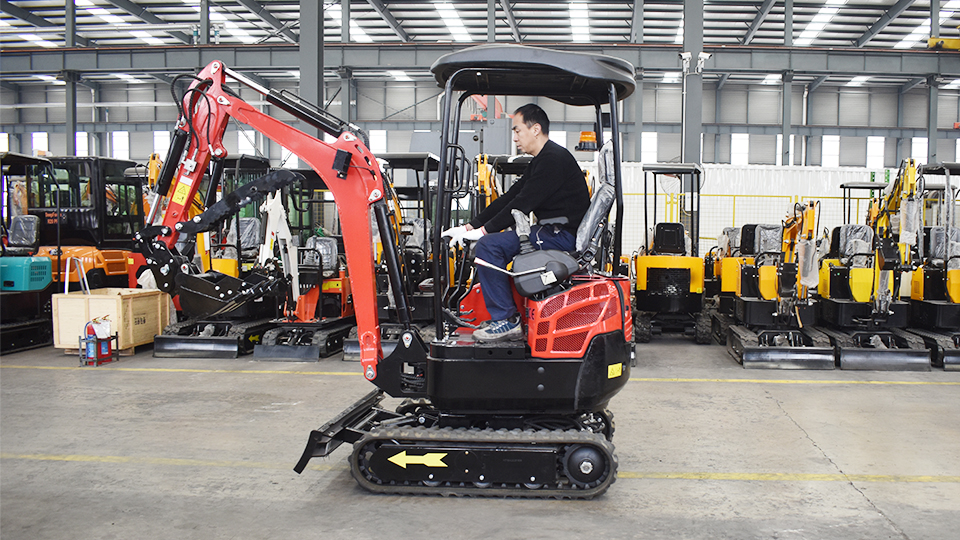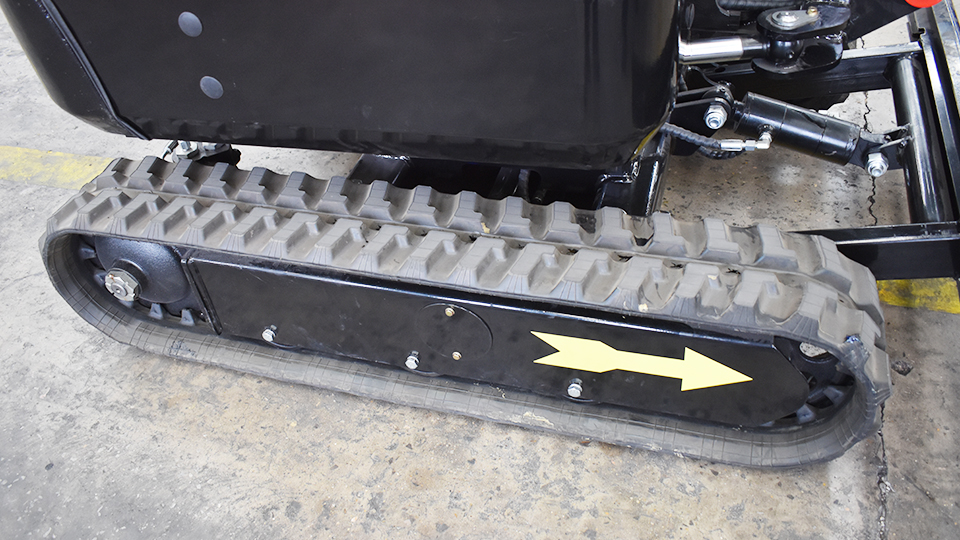Digging Deep for Value: Identifying the Mini Excavator Offering the Best Bang for Your Buck
The compact yet powerful mini excavator has become an indispensable tool across a wide spectrum of industries, from landscaping and utility work to construction and demolition. Their maneuverability in tight spaces, versatility with various attachments, and ability to perform tasks ranging from trenching and grading to demolition and material handling make them a compelling investment. However, with a plethora of manufacturers and models flooding the market, the crucial question for any prospective buyer arises: which mini excavator truly offers the best value for money?
Defining "value for money" in the context of heavy equipment is not solely about the lowest purchase price. It encompasses a holistic evaluation that considers initial cost, performance capabilities, durability, reliability, operating costs, maintenance requirements, resale value, and the level of after-sales support provided by the manufacturer. Identifying the mini excavator that strikes the optimal balance across these factors requires a thorough understanding of your specific needs and a comparative analysis of available options.
This technical article will delve into the key considerations for determining the best value mini excavator. We will explore the critical performance parameters, durability and reliability factors, operational cost aspects, and the significance of manufacturer support. While pinpointing a single "best" model is elusive due to varying user requirements, this analysis will equip potential buyers with the knowledge to make an informed decision that aligns with their specific needs and budget.
Understanding Your Needs: The Foundation of Value Assessment
Before even considering specific models, a clear understanding of your typical applications and operational demands is paramount. This involves answering critical questions such as:
Primary Applications: Will the excavator be primarily used for trenching, grading, demolition, landscaping, or a combination of tasks? Different applications may prioritize different performance characteristics. For instance, frequent use of hydraulic attachments might necessitate a machine with higher auxiliary hydraulic flow.
Operating Environment: Will the excavator be working in tight, confined spaces, or more open areas? This will influence the preferred size and maneuverability of the machine. Consider factors like doorway clearances, turning radius, and tail swing.

Lifting Requirements: What is the typical weight of materials that need to be lifted? This will dictate the required lifting capacity at various reaches.
Frequency of Use: Will the excavator be used daily, weekly, or sporadically? This will impact the importance of durability and long-term reliability.
Budget: What is the total budget allocated for the purchase, including potential costs for attachments, transportation, and initial maintenance?
Operator Skill Level: Will the primary operators be experienced professionals or less familiar with heavy equipment? User-friendly controls and intuitive operation can be a significant value proposition.
Answering these questions will help you define the key performance parameters and features that are most important for your specific needs, forming the basis for evaluating the "value" offered by different mini excavator models.
Key Performance Parameters: Where the Rubber Meets the Ground (or the Bucket Meets the Earth)
Several performance parameters directly impact a mini excavator's productivity and suitability for various tasks. Evaluating these in relation to your needs is crucial for assessing value:
Digging Force (Bucket and Arm): This measures the excavator's ability to penetrate and break through different soil types and materials. Higher digging forces translate to greater productivity, especially in challenging ground conditions. Compare bucket breakout force and arm breakout force specifications.
Lifting Capacity: This indicates the maximum weight the excavator can lift at various reaches and heights. Consider both over-front and over-side lifting capacities, as these can differ significantly. Refer to the machine's load charts for detailed information.
Digging Depth and Reach: These specifications define the excavator's operational envelope. Digging depth determines how deep it can excavate, while reach dictates how far it can extend its arm and bucket. These are critical for trenching, excavating around obstacles, and loading trucks.
Engine Power and Fuel Efficiency: The engine's horsepower and torque influence the excavator's overall performance and its ability to power hydraulic functions. Fuel efficiency directly impacts operating costs and should be a significant consideration. Compare engine specifications and fuel consumption rates.
Hydraulic System Performance: The hydraulic system powers all the excavator's movements and attachments. Key specifications include hydraulic flow rates (main and auxiliary), operating pressure, and the responsiveness of the controls. Higher auxiliary flow is essential for operating demanding hydraulic attachments.
Swing Speed: This refers to the speed at which the excavator's upper structure can rotate. Faster swing speeds can improve cycle times and overall productivity, especially in repetitive digging and loading tasks.
Durability and Reliability: Investing for the Long Haul
A mini excavator that breaks down frequently or requires extensive repairs can negate any initial cost savings. Assessing durability and reliability is crucial for long-term value:
Component Quality: Look for reputable manufacturers known for using high-quality components, including engines, hydraulic pumps, cylinders, and undercarriage parts. Research component suppliers and their track records.
Structural Integrity: Examine the robustness of the excavator's frame, boom, and arm. Look for reinforced stress points and durable welding. Consider the reputation of the manufacturer for building robust machines.

Undercarriage Design: The undercarriage is subjected to significant wear and tear. Evaluate the quality of the tracks, rollers, idlers, and sprockets. Consider the availability and cost of replacement parts.
Ease of Maintenance: A machine that is easy to service and maintain can reduce downtime and long-term operating costs. Look for features like easily accessible service points, clear maintenance manuals, and readily available filters and fluids.
Warranty: A comprehensive warranty provides peace of mind and can be an indicator of the manufacturer's confidence in their product's reliability. Compare warranty terms and coverage across different manufacturers.
Operating Costs: Beyond the Purchase Price
The initial purchase price is only one component of the total cost of ownership. Consider the following ongoing operating costs when evaluating value:
Fuel Consumption: As mentioned earlier, fuel efficiency directly impacts operating expenses. Compare fuel consumption rates under typical operating conditions.
Maintenance Costs: Factor in the cost of regular maintenance, including filters, fluids, and wear parts. Research the availability and pricing of these items.
Repair Costs: While difficult to predict, consider the general reputation of the manufacturer and the potential cost of major repairs based on industry feedback.
Operator Training: Investing in proper operator training can improve efficiency, reduce the risk of damage, and minimize operating costs in the long run. Factor in the cost of training if needed.
Insurance Costs: The cost of insurance can vary depending on the size and type of excavator. Obtain quotes for different models to include this in your overall cost assessment.
Manufacturer Support and Resale Value: Intangible Yet Important Assets
The relationship with the manufacturer and the potential resale value of the machine can significantly impact its overall value proposition:
Dealer Network and Support: A strong dealer network ensures access to parts, service, and technical support. Evaluate the proximity and reputation of local dealers. Consider their responsiveness and expertise.
Parts Availability: Downtime due to unavailable parts can be costly. Research the manufacturer's parts distribution system and the typical lead times for common components.
Technical Documentation and Training: Clear and comprehensive operator manuals, service manuals, and available training programs can enhance the ownership experience and minimize downtime.
Resale Value: Some brands and models tend to hold their value better than others. Research the historical resale value of comparable machines to factor this into your long-term cost analysis.
Navigating the Market: No Single "Best" Answer
Given the diverse needs of mini excavator users, there is no single model that universally represents the "best value for money." However, by systematically evaluating your specific requirements and comparing different machines across the key performance, durability, operational cost, and support factors outlined above, you can narrow down your options and identify the excavator that offers the optimal balance for your particular circumstances.
Illustrative Examples (Hypothetical):
To illustrate the concept, consider two hypothetical scenarios:
Scenario 1: Landscaping Contractor (Focus on Versatility and Maneuverability): This user might prioritize a smaller machine with excellent maneuverability for working in tight residential spaces. Good auxiliary hydraulic flow for running attachments like augers and breakers would be crucial. While maximum digging depth might be less critical than smooth operation and ease of transport, reliability and readily available parts from a local dealer would be highly valued. A slightly higher initial cost might be justifiable for a machine with a strong reputation for durability and good resale value.
Scenario 2: Utility Company (Focus on Digging Performance and Reliability): This user might prioritize a machine with a greater digging depth and breakout force for trenching and excavating for pipe and cable laying. Fuel efficiency and a robust undercarriage for working in varied terrain would be important. While maneuverability is still a factor, raw digging power and the reliability to minimize downtime would be paramount. A slightly lower initial cost might be attractive, but not at the expense of long-term durability and the availability of specialized parts.
In both scenarios, the "best value" machine is not necessarily the cheapest but the one that best meets the specific operational demands and long-term cost considerations of the user.
Conclusion: Making an Informed Decision
Identifying the mini excavator that offers the best value for money is a process that requires careful research, self-assessment, and a comparative analysis of available options. By thoroughly understanding your specific needs, evaluating key performance parameters, considering durability and reliability, analyzing operating costs, and assessing manufacturer support and resale value, you can move beyond the initial purchase price and make an informed decision that will provide the greatest return on your investment over the long term. Remember that the "best" machine is the one that best aligns with your unique requirements and budget, ultimately contributing to the efficiency and profitability of your operations. Dig deep into the specifications, talk to dealers and other users, and don't be afraid to get your hands dirty with research to find the mini excavator that truly delivers the best bang for your hard-earned buck.
Post time:Sep-25-2020
